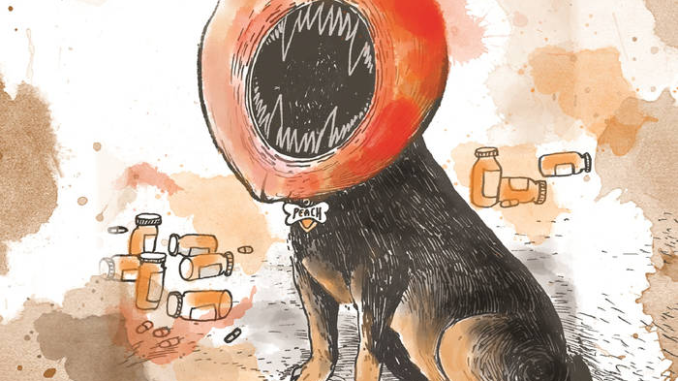
While recent years have seen bands who bear more than a passing similarity to our flannel-clad forefathers, it feels incorrect to ascribe the grunge distinction to any band past 1999. The reason is simple: Despite what some brand-marketing executives might have you believe, the label “grunge†has always referred to an ethos and aesthetic, rather than a sound. The Smashing Pumpkins never had much in common with Nirvana, and if we’re being honest here, Pearl Jam was just an above average dad-rock band. The grunge designation refers as much to a bands context within their sub-cultural landscape as the band’s music itself.
It’s this understanding that makes How to Peach, by Resilient so impressive. During the album’s 43 minute run-time, the Philadelphia-based femme-rockers effectively take you on a scenic tour of the many avenues of Grunge, from quaint garages to open-air arenas. But while their influences are clear throughout, How to Peach remains a creative achievement by never veering into hero-worship territory.
At the album’s mellifluous center are singer/rhythm guitarist Erin Fox’s elastic vocal-work and apropos lyrics. Fox displays a major talent for writing and performing lyrics that complement the band’s instrumentation, no matter which influence they happen to be wearing at the time. During one of the minor sounding passages on Ceiling, where Fox delivers the line “It’s not like you would really understand the way I feel right now,” in a smokey affectation, evoking images of a lounge-act on a dimly-lit stage. On Medication, a song about the dulling effects of anti-depressants, Fox manically shifts cadences from listless and aggravated, to sarcastic and bemused (Fox’s delivery as she reads the side effects off her medications warning label is an album highlight).
This understanding of tonality lends itself toward some of the albums most clever moments and provides an opportunity for Fox to place her vocal dynamics on full display. And quite a display it is.
From spiraling vocal riffs, to banshee-like screeching, Fox performs with the confidence of somebody who is used to commanding attention.
But while Fox commands attention from the first track, this isn’t quite a one-woman-show.
Bassist Alicia Dickerson and drummer Katie Fox provide the foundation of each track more than competently, with Dickerson picking always-catchy, vintage sounding bass-lines over Fox’s solid grooves. And with the rhythm section accounting for much of the albums infrastructure, lead guitarist Lennon Cantrell is free to introduce some frills atop his phenomenal, dynamic riffage.
Not unlike Fox’s spirited performance, Cantrell displays a tapestry of influences (predominantly that of 90s alternative and grunge acts) that are cut together well enough that the stitching is no longer visible. Cantrell’s 90s worship permeates throughout, giving any fan of the era something to latch onto. There are straight-ahead rock riffs that call to mind Nirvana’s early work; feedback-drenched solos a-la the Pixies; groove sections that invoke Jesus Lizard. Cantrell plays an array of styles off of Fox’s leads, seeming to always know when to play subdued, sparse notes and when to stomp on the distortion pedal.
The structure of the album itself also plays to one of its greatest strengths. In an era where individual tracks are generally bought off third-party streaming services, this album rewards a full listening experience by being cohesive from start-to-finish.
The album is bookended with punchy, nostalgic sounding grunge tracks (complete with Kurt Cobain-esque nonsensical lyrics), but the songs that make up the bulk of the album tend to eschew or subvert the typical loud-quiet-loud template of Grunge in favor of crafting something much less predictable.
Slower, melancholic songs act as buffers between the album’s more blistering content. There are false-endings, and jarring tonal shifts scattered throughout. But even during the albums most surprising moments, everything feels self-contained and well-balanced. There isn’t a moment on the album that feels superfluous or tacked on, and this fluidity makes for an easy repeat-listen.
Society’s collective consciousness has a funny way of editing history. With the clarity of hindsight, and supported in large part by our own nostalgic ideals, we are able to recall the past in romantic splendor. We can evoke the boundless curiosity of our youth with none of the accompanying fear. We are able to celebrate Nirvana, while conveniently forgetting Sugar Ray.
With How to Peach, Resilient have managed to neatly package their nostalgia in a way that has allowed their personalities, as individuals and as a band, to gleam through on every track. And at the helm, Erin Fox’s patent vocal identity is a stark reminder of a time when rockstars somehow seemed bigger and brighter. How to Peach is a sentimental vestige from a bygone era that has managed to retain its freshness is 2017. Teenage angst has paid off well, indeed.

Leave a Reply